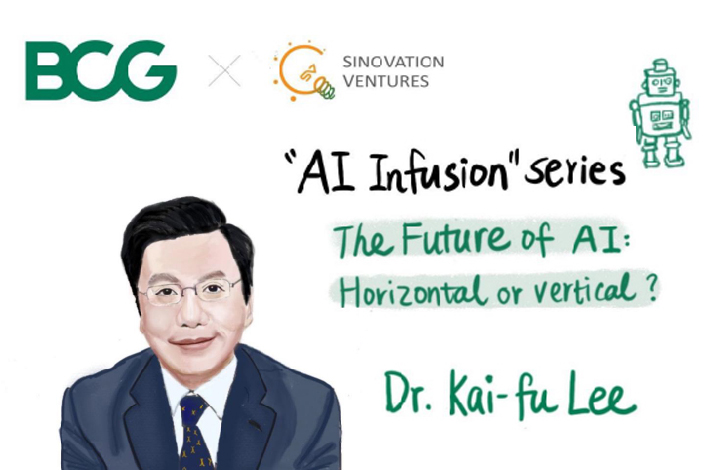
China is well-recognized as a world leader in the development of artificial intelligence (AI), especially in its adoption in industry. In China, various industries have begun trying to apply AI across industry verticals to maximize production and service efficiency. According to the 2020 BCG-MIT report, in 2020, 77% of enterprises in China had adopted AI to some extent, compared with 49% in the U.S. and 47% in Europe.
In addition to government and capital-market support, robust market competition, sufficient data supply and shrinking labor force dividends, there is another crucial factor driving this disparity. In China, there are clear commercial implementation scenarios for AI. Many tech firms are active in these vertical scenarios, serving as a bridge between traditional enterprises and AI application. Let’s call them “AI transformers.” AI Transformers have powerfully disrupted traditional enterprises’ bottlenecks to AI deployment by sharing their AI technology and understanding of vertical industries, and thus becoming a bridge for these traditional players to venture into AI.
Editor’s note: Boston Consulting Group (BCG) spoke with tech industry veteran Kai-Fu Lee about the state of the AI industry.

BCG: We know that you have been in contact with many AI companies. What do you think are the current trends in the application and development of AI?
Kai-Fu Lee: Companies developing general-purpose AI technologies initially enjoyed a strong advantage, because only a few companies possessed capabilities such as image or speech recognition. For example, back then only leading firms such as SenseTime Group Ltd. and Megvii Technology Ltd. had a significant technological edge in computer vision, so naturally they were able to capture a large market share.
But horizontal, general-purpose technologies are rapidly being commoditized, with more and more players gradually acquiring relevant capabilities. For instance, camera companies, Internet of Things equipment companies and medical device companies are all developing image-recognition technologies. In the past, companies were able to capture value simply by leveraging their technological advantages, but that is no longer the case in a few short years. AI has evolved from its initial phase of “AI+” centered around technology breakthroughs to the application phase of “+AI” centered around applying to practical, and often times commercialized scenarios. “AI+” retains its value, but “+AI” will become increasingly important. What’s more, tech giants can quickly conquer the market at lower prices and on a larger scale. In short, there are simply too many ways to defeat a certain technology or platform.
Of course, companies with special tech advantages or major breakthroughs in specific fields can still monetize their technologies, but their window of opportunity may become narrower than before. These young companies need to think about how to quickly identify implementation scenarios and explore go-to-market approaches before other players catch up.
Compared with horizontal general-purpose technologies, it’s easier to build barriers around vertical, industry-specific tech solutions. In my opinion, there will be numerous opportunities for vertical AI companies to stand out in each vertical. Chinese companies differ from their American counterparts. On average, American enterprises are more standardized and digitized, so it is easier for the tech giants to leverage business management enterprise software to integrate their services. In China, on the other hand, companies, especially more traditional enterprises, are fragmented but not standardized. There are few ready-made platforms where AI solutions can be simply bolted on. Huge in scale, China’s traditional industries are in a critical phase of technological upgrade and digital transformation. The application of AI, automation and other technologies will help reduce costs, increase efficiency and create huge economic value. During this process, specific vertical industry tech solutions are expected to pull ahead in the corporate service segment. In diverse verticals from automobiles to banking, we are witnessing the emergence of new, vertical, innovative, and industry-specific AI solutions led by young entrepreneurs. Therefore, what the future “+ AI” needs is vertical customization, far more than horizontal standardization.
So how do you price a customized service? Tech companies need to dig deep into industry and business processes to identify the value that AI can add or replace. Chinese AI companies are pivoting every day. They may start out with horizontal technology, but then continuously customize it for specific business problems and scenarios. They need to think about questions such as “How can this technology change manufacturing or the health care industry?” “How should they sell it, and to whom?” “Which companies are interested in it?” “Who is making the purchase decisions?” AI companies need to adjust their business model accordingly.
We understand that AI tech companies need to go deeper into vertical industries. How should enterprises in traditional industries apply AI?
Many traditional Chinese companies are rushing to apply or attempt to apply AI. With the advent of electricity, businesses that adopted at a late stage perished. Particularly in industries such as insurance, retail and e-commerce, companies that are slow to embrace AI could be outcompeted by new AI players, or by competitors that have applied AI. Each breakthrough by AlphaGo and AlphaFold intensifies this sense of anxiety. Furthermore, during periods of economic downturn, enterprises will need to streamline production and management to reduce costs. They need to seek automated solutions such as RPA, robotic process automation.
In my opinion, traditional enterprises need the following three key factors to effectively apply AI:
Enlightened decision-makers. The application of technology will disrupt the operation and business models of traditional enterprises. They will need open-minded and committed decision-makers to consistently push for changes throughout the organization and to deal with all kinds of resistance and sluggishness that may arise.
Pragmatic plan. Identify and implement quick wins to demonstrate the value and potential of AI to employees. It’s obviously easier to find a single point of breakthrough than to attempt an all-out transformation. The point of breakthrough would preferably be noncontroversial, noncore to the business, and of low risk. Through this single-point quick win, you can gradually extend application across the whole business process and increase employees’ understanding of and trust in AI.
Data. Enterprises will need business-relevant, high-quality labeled data and a closed feedback loop to connect separated divisions or sub-businesses. We have seen too many AI application projects fail because companies lack high-quality and well-labeled data.
The article is based on an interview series on AI Infusion, jointly launched by BCG Henderson Institute, BCG GAMMA and Sinovation Ventures. Kai-Fu Lee, a former president of Google China and global vice president of Microsoft, is chairman and CEO of Sinovation Ventures.
The views and opinions expressed in this opinion section are those of the authors and do not necessarily reflect the editorial positions of Caixin Media.
If you would like to write an opinion for Caixin Global, please send your ideas or finished opinions to our email: opinionen@caixin.com
Get our weekly free Must-Read newsletter.







